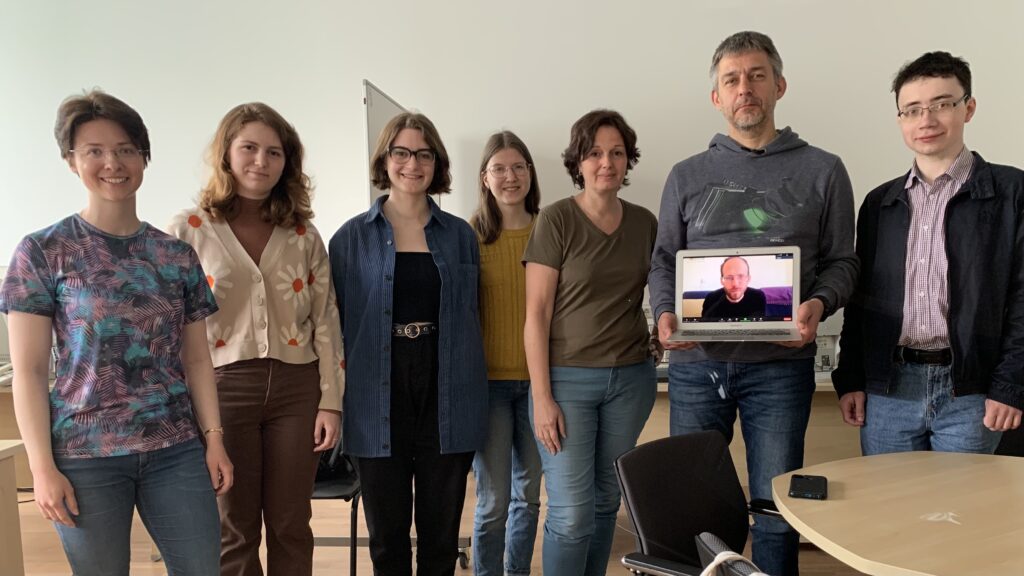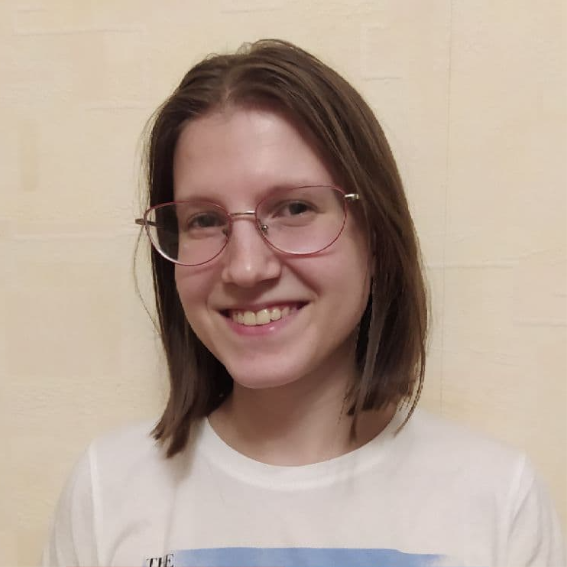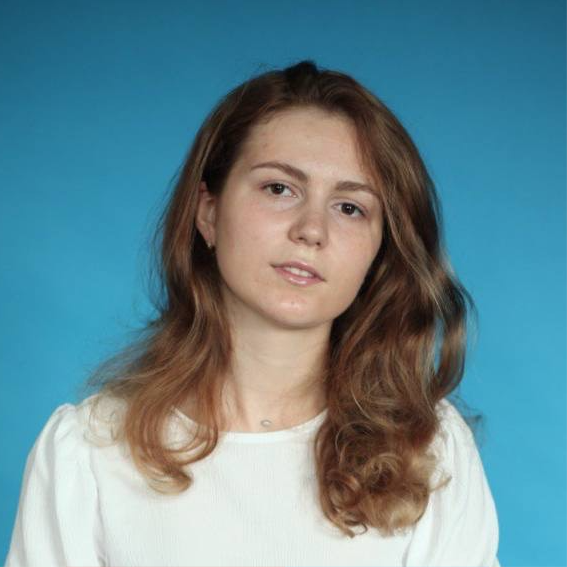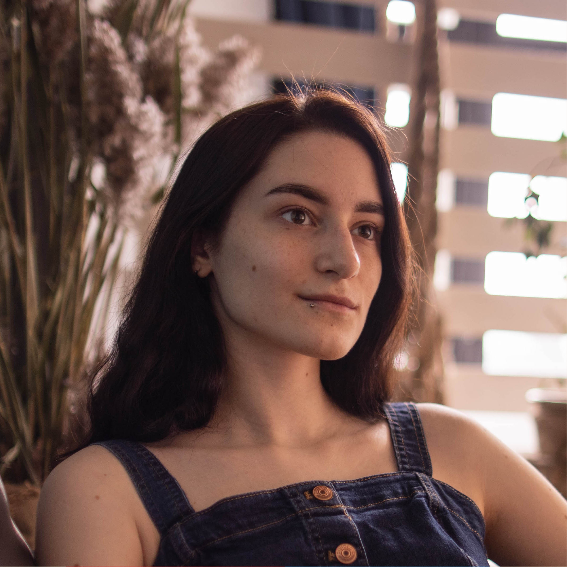Parametric model of agreement
in the light of experimental data
This research is supported by Russian Science Foundation, RSF project 22-18-00037 realized at Lomonosov Moscow State University.
Abstract

Results
In 2023, the team continued to work on solving two fundamental problems in building a parametric model of agreement in Russian: identification of agreement variability contexts and extension of the agreement approach to other types of feature-based interactions.
We examined agreement variability with non-canonical controllers. Firstly, we experimentally investigated agreement in constructions with quantity nouns. The results show that nouns meaning exact quantity differ from nouns meaning indefinite quantity with respect to the structural characteristics of the constructions they form. Acceptability of agreement strategies also depends on the choice of premodifiers, as quantity nouns differ with respect to their compatibility with prequantifiers and demonstrative or possessive premodifiers. Secondly, we studied constructions with governing quantifiers. We have shown that elective and nominative constructions differ in how visible the restrictor is to agreement probes. Thirdly, we analyzed constructions with agreeing quantifiers in Tatar in a comparative aspect. We have shown that person agreement depends on whether the denotation of the quantifier is a strict subset of the restrictor or coincides with it.
In order to formalize the resolution rules, we studied non-canonical controllers of another type, namely, coordinated constructions. Firstly, we investigated grammatical and semantic characteristics of coordination. We determined which combinations of morphological features are available for the elided and the spelled-out nouns in constructions with coordinated modifiers: in Russian, number features in numeral phrases must not conflict and case identity is required. The animacy of conjuncts turned out to be a weak factor and the type of conjunction was an insignificant factor, which allows us to conclude that the structure of conjunctive and disjunctive nominal phrases is similar. At the same time, differences were found in agreement strategies with coordinated constructions and comitative constructions. Secondly, we analyzed the external context parameters that contribute to the choice of agreement pattern. Predicate agreement is significantly influenced by the linear order of the subject and the predicate, the distance between them and the syntactic weight of the conjuncts. The influence of the argument structure of the predicate and the presence of a relative clause modifying the coordinated nominals is not significant. The results of the study made it possible to verify whether the analysis of coordination constructions based on ATB-movement is valid. The empirical generalizations, on which the ATB-analysis is based, have not been confirmed. As an alternative, we proposed an analysis that assumes that coordinated constructions are flat and do not involve any hierarchy.
Next, we conducted studies of variable agreement in the presence of multiple potential controllers.
Based on evidence from binominative sentences, we have shown that the grammatical categories characterizing nominal constituents are organized differently: gender is based on the equipollent opposition, while person is formed by privative oppositions. We also studied relative constructions with a pronominal head and focused on whether the case feature of the head influences the choice of the agreement pattern when there is a conflict of features. We found that there are three groups of Russian speakers that have different grammatical preferences. The study of agreement in the context of multiple potential controllers allowed us to formulate two alternative models of Agree. According to the first model, there is multiple agreement with all the available controllers, and the exponent is chosen in the morphological module. According to the second model, agreement alternatives arise due to the different timing of copying features from the controller to the target with respect to the impoverishment of the person feature on the controller. We have also shown that the effect of syncretism in Russian has a relative rather than qualitative nature, regardless of whether the predicate morphologically expresses the agreement category.
The team members were elaborating on integrating the agreement module into the formal model of syntactic licensing. We continued the study of negative concord in Russian. A comparative study of the negative and indefinite pronouns properties was conducted together with a study of how negative pronouns are used with derived prepositions. The study confirmed the grammatical nature of the observed restrictions. In addition, we compared the non-local negative concord in Russian with other long-distance agreement phenomena: person and number agreement in the Turkic languages and nominal class and number agreement in the Nakh-Daghestanian languages. We put forward a hypothesis according to which the local domain for agreement may be larger than the clause: in this case direct agreement between the controller and the target is possible, crossing the boundary of the clause.
While studying syntactic selection as a feature-based interaction, we evaluated the island properties of clausal arguments with and without the pronominal light head «to» embedded under presuppositional (factive) predicates, non-presuppositional (non-active) predicates or nouns. We confirmed that the clausal arguments with «to, chto» function as projections of the determiner, which is similar to the analysis of (definite) noun phrases in languages with articles. Thus, we clarified the featural characteristics of the semantic and syntactic selection isomorphism: we proposed that presuppositionality is encoded in syntax as a feature of definiteness in the determiner projection. We also dealt with the matching restriction on parasitic gap licensing and considered matching as a grammatical phenomenon in the scope of the agreement model. The results of the study provide an argument in favor of the elliptical nature of the parasitic gap in Russian.
Finally, we systematically organized the phenomena exhibiting agreement variability in Russian and described each case using a uniform template to create the database of agreement variation. We developed a technical specification to further publish the database on the project’s website. Last but not least, we developed a corpus of Russian with the syntactic markup and the corresponding search algorithm.
The team was working on solving two fundamental problems: creating a parametric model of agreement and integrating agreement mechanisms into theoretic accounts of other syntactic interactions.
With regard to the agreement variability parametrization we achieved the following results. First, using the corpus and experimental methods we investigated agreement in context of multiple controllers based on three constructions in Russian. We show that in relative constructions with a personal pronominal head, the conflict of person features between the head and the relative pronoun leads to a decrease in acceptability compared to syncretic agreement or no feature conflict. On the contrary, in binominal clauses syncretic agreement and matching features of potential controllers have the same level of acceptability as agreement with one of the controllers. In constructions with a coordinate subject three agreement patterns are licit: resolved agreement, agreement with the first conjunct (partial agreement) and (in the case of non-past tense) default agreement in 3rd person plural. While these three strategies are all acceptable, they are not in free variation, showing different levels of acceptability depending on word order, conjunct order, and tense form of the verb. Thus, despite all three constructions we studied involve multiple potential controllers, they differ as to feature realization.
Secondly, we examined the resolution rules in case of agreement with non-canonical controllers. In constructions with governing quantifiers there are three possible agreement patterns: agreement with the quantifier (subset), agreement with the restrictor (superset), and default agreement. We show that these patterns are found in both Russian and Tatar, but the conditions for their realization are different. Along the same lines, we identified morphological and syntactic factors that determine variance in agreement with a non-canonical controller in noun phrases with coordinated modifiers. These factors include regularity of the number morphology of the noun and interaction of the attributive and predicative agreement patterns.
Thirdly, we studied the external conditions for agreement computation. We conducted computational and experimental studies of morphological homonymy of subject and direct object. We examined the ability of neural language models to learn the pattern of predicative agreement in the contexts involving case forms’ homonymy and increasing complexity of the syntactic structure. Using corpus data we investigated parameters native speakers rely on when parsing predicate agreement in transitive structures with varying degrees of homonymy. The results of the study show that for Russian native speakers the case parameter is the most significant one and the parameters of word order and semantics compensate each other, whereas neural network algorithms focus primarily on word order.
With regard to the integration of the agreement model into the formal model of Russian syntax we achieved the following results. The study of locality constraints on negative concord revealed that they are close to movement constraints on wh-extraction and relativization; other non-local syntactic interactions such as NPI licensing, anaphor binding and quantifier raising are significantly different. This result corroborates the analysis reducing negative concord to the (covert) movement of a negative pronoun targeting the sentential negation projection.
Significant results have been achieved in the domain of modelling syntactic selection as a feature-based interaction. Studying selection of non-finite clauses in Russian, we identified a previously unnoticed type of clausal argument, namely, a small clause with a participle as a predicate and a subject which raises to the structural case position in the matrix clause. These small clauses are selected by the predicates of perception, evaluation, and causation. We developed a hypothesis according to which the constraints on raising structures are feature-based: raising implies that the non-finite predicate should be characterized by the tense feature, which makes it possible in Russian to raise subjects from small clauses, but not from infinitival clauses.
On the basis of a distributive analysis of presuppositional predicates, we confirmed the correlation between presuppositionality (as a lexical property of the matrix predicate) and the nominal status of its argument (the presence of the pronominal light head “to”), which was earlier proposed in the literature. Presuppositionality of a predicate determines the acceptability of a nominal projection for verbs with an accusative object and makes it obligatory in nominalizations. We suggested that the violation of this correlation is licensed by a separate pragmatic factor, which implies a correlation between the new information and the absence of a nominal projection and, conversely, the given information and the presence of a nominal projection. Thus, we proposed a model for a clausal argument selection which is based on the default principle of feature-driven syntactic selection isomorphic to the semantic type of the argument, but which also integrates morphosyntactic and informational factors, as well as potentially other non-lexical factors (such as speech register).
Finally, we started working on the database of agreement variability in Russian. We compiled a list of criteria to classify the cases of non-standard agreement in Russian. These criteria include the context of variability, the structural type of agreement, the case of the controller, the grammatical categories that show agreement variation. Next, based on three Russian constructions (coordinated subjects, constructions with quantity nouns and constructions with governing quantifiers) we compiled a list of possible predictors of variation resolution. At last, but not at least, we analyzed major theoretical approaches to agreement and identified parameters distinguishing between various formal models. This will make it possible for us to choose the most adequate model for agreement variability parametrization.
Team

Ekaterina Lyutikova
Project Leader

Pavel Grashchenkov
Principal Investigator

Anastasia Gerasimova
Principal Investigator

Mikhail Knyazev

Tatiana Davidjuk

Fedor Baikov

Ksenia Studenikina

Daria Belova

Lada Pasko
2019 - 2022 ©